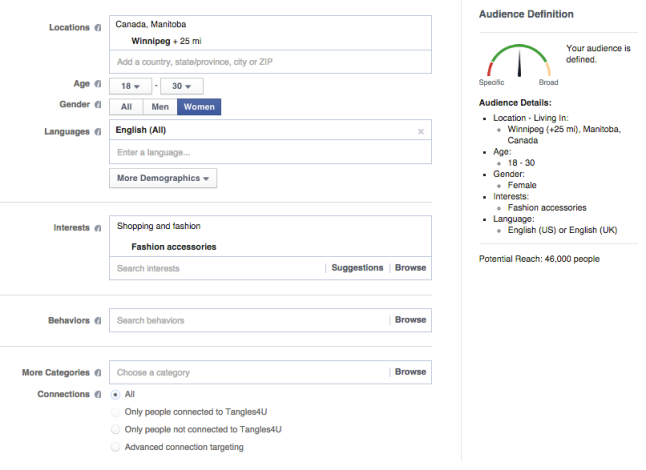Communication is just as much receiving a message as it is sending one. Human interaction is a need most cultures value, and we mostly speak to be heard. Unfortunately, there are many factors that result in miscommunication.
- unclear message
- unable to decode message as intended
- alternative perceptions
- language barriers
- external/internal noise
Some factors we can’t control. To be a smarter communicator, we need to know which factors we can control and how to effectively control them.
How can we be better communicators?
 1) Know your audience.
1) Know your audience.
If you are (or will be) studying public relations (PR), this often comes up, but it’s so essential to everything you do! A part of being a smarter communicator is understanding who your audience is, what they like/dislike, and how they think and behave.
2) Know which platform to use.
Utilize channels that make sense for your target audience and message, and know when the use them.
Different Types of Communication in PR
In 1984, James E. Grunig developed the ‘Four Models of Public Relations’ in his book (with Todd Hunts) modelling different forms a communication between an organization and its stakeholders. Below is the model that helped shaped what the public relations industry is today. (Source)
Press/Agent Publicity — One-Way Communication
“Uses persuasion and manipulation to influence audience to behave as the organization desires.”Public Information Model — One-Way Communication
“Uses press releases and other one-way communication techniques to distribute organizational information. The public relations practitioner is often referred to as the in-house journalist.”Two-Way Asymmetrical Model — Two-Way Communication
“Uses persuasion and manipulation to influence audiences to behave as the organization desires. Differs from the press agentry model through the use of research to find out how best to persuade stakeholders.”Two-Way Symmetrical Model — Two-Way Communication
“Uses communication to negotiate with the public, resolve conflict and promote mutual understanding and respect between the organization and its stakeholders.”
 3) Tailor your message.
3) Tailor your message.
Be simple and clear.
Based on your research, configure a message that your audience will hear and have some sort of response to. Good writing skills are important in PR (I’m definitely learning everyday). It’s an art (but certainly challenging) to express an idea(s) and have your audience understand and believe the message. Knowing your audience and which platform to use helps in combating miscommunication, but tying that all together with a clear and simple message is the cherry on top. Practice your craft: write, write, write.
Tips on Reaching Your Audience On Social Media
There are many available channels to help you broadcast yourself/organization on social media. Here are the three main channels used today:
You can create ads and boost posts for different purposes (eg: page likes, website clicks, offers, etc.).
This example is the Page Likes ad option for an organization I moderate, Tangles4U. What’s great is you can customize your target audience’s location, age, interests, behaviours, etc. and on the right hand side, it also shows your potential reach based on your specifications. After this step, you determine your budget for this particular campaign. Facebook automatically broadcasts it for you until the budget or potential reach is met.
ads.twitter.com is another great tool that I use for @Tangles4U. You’ll need to link an existing Twitter account in order to utilize the features, but once you’re in it’s much like Facebook. You have the options to create different campaigns for tweet engagements, website clicks, followers, etc. Twitter Ads is a little more complicated than Facebook Ads where it’s not a simple input form process and you have to select through a series of options.
This example is Targeting for a tweets engagement ad. Your specifying options are through keywords, television, interests and followers, and target audiences. Budget setting is similar to Facebook. Personally, I like Facebook’s process better, but it depends on your audience and message. Here’s a quick snapshot:
Lastly, we have LinkedIn’s campaign manager. Here you can create an ad or sponsor content (that’s already existing). I prefer this process over Twitter because it’s much simpler to use. You also set budgets for each campaign.
 When you click “More targeting options” it reveals the options below:
When you click “More targeting options” it reveals the options below:
Each channel has its own metrics tracking system which is great for evaluating the success of your campaign. This was a very brief run through of how to target your audiences using ad options on social media, but there’s so much more to venture through. I’m hoping the more I get comfortable with knowing my audience, picking different channels and developing messages that I can utilize these great features on social media.
Hopefully there was no miscommunication 😉



very useful, thanks! You should keep going with this blog.
Very concise and well written. And a stellar headline to boot. 😛 Good post Mercy, you’re onto something with this style of writing.
Great job! I think your feedback says is all, too! The best of luck to you in the remainder of your PACE studies! I have no doubt that you’ll do great things in your career. 🙂